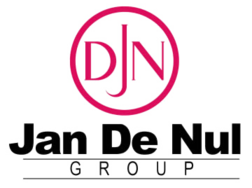Trend 1: When everybody has access to the same performance tools, you need to outgrow the tools
At the end of last year, Loop Earplugs announced that it was launching its first global brand campaign. Swapfiets also announced its first international brand campaign in 2023. Why is that remarkable? Loop and Swapfiets both started out as direct-to-consumer (D2C) brands selling almost exclusively online, with a growth engine fueled by performance campaigns.
Suddenly they are moving into brand in a big way, investing in TV, out-of-home and even “classic” media. Brand campaigns seem all the rage, as even Linkedin and Meta are doing them.
Why is everybody investing in “brand”?
Because at some point, digital marketing hits a ceiling. When that happens, you need to pivot to brand building.
Here’s a visual explaining the “performance plateau”. Adding brand building to your marketing efforts will also result in a lift of your performance marketing:

But there’s a second reason: the early mover advantage of performance marketing is gone. The advantage of having a better toolstack is no longer.
If you’re using a performance marketing toolstack to help you generate business online – congratulations, your competitors are doing the exact same thing. The exact same thing? Yes, down to the tools they’re using.
According to Databox (2023), 88% of the companies out there are either using Google Search Console, SEMRush, Ahrefs, BuzzSumo or SEOptimizer. When it comes to marketing automation, winner-take-all dynamics all but guarantee that your competitors – like you – are using Hubspot, Salesforce, Mailchimp, Zoho, Pardot or ActiveCampaign (source: Salesforce, 2021).

The tool stack is no longer enough to guarantee an edge in your marketing plans. You need to think beyond the tools:
- Strategically
- Which parts of your tool stack are currently driving most of your sales?
- Where are you overinvesting?
- Tactically
- Are you choosing the right objectives for every tool?
- Technically
- Have you set up everything correctly?
- Are your paid media platforms optimising on actual leads?
- Are you benchmarking SOV against the right competitors?
- Are you sending out the right emails at the right intervals?
- Is your website even working?
- Are you showing promotions to people that would’ve bought anyway (or have bought already)?
- Creatively
- Are you telling a story that is relevant to your audience?
- Are you recognisable even when people aren’t watching your full ads?
- Are your subject lines tried & tested?
- Are you showing the right products?
All this also means that purely relying on the algorithm for results – “setting and forgetting” your ad account, is a thing from the past. Even if it worked in the past, even if it’s still sort of working today, you have to get ready to face a blank page and ask yourself: what are we trying to achieve here?
How can you know that your current digital marketing approach is hitting a ceiling? Here are a few signals to take seriously:
- Your leads are getting more expensive
- You’re getting fewer leads
- SEA is your biggest driver of leads/sales in your attribution model – this means you’re (still) paying for every lead, instead of building a brand
- You’re losing deals because prospects don’t know your brand (or in the bizz: you’ve got low salience)
If any of this sounds familiar to where your marketing is today, start by doing a performance marketing audit. There might be a technical issue somewhere in your setup – but chances are your challenges go deeper than that: you need to understand the health of your brand – not just your channels.
Start by understanding your brand strength through a market study. It’s not cheap, but probably less expensive than what you’re investing in your performance marketing. Study other market signals like Share of Voice and Share of Search. Ideally, for both you should be getting more than your market share would suggest.
You can see how to perform a “Share of Search” analysis here:
If it’s clear you’ve hit the ceiling of performance marketing for your company, it’s time to add brand building to your toolbox. Invest in a higher volume of brand communications, and be more consistent in your brand communication.
Trend 2: privacy will hit digital marketing and reporting – are you ready for it?
Here’s a timeline of privacy initiatives from the EU and from Apple and Google. Notice how the pace of privacy initiatives is accelerating since the introduction of GDPR in May 2018.

The privacy era is here, and this will impact how we tell stories and measure their impact. It’s not impacting who we can target, because it’s not like people stopped using the internet. It’s impacting how precisely we can target them. On that, it’s doubtful that we’ve ever been able to target them very precisely, and it’s also doubtful that precise targeting was ever that useful.
But we convinced ourselves and our C-level that we could.
Marketing professionals used to build in-depth audience profiles, or personas, so we could make sure we were targeting the right people with the right message on the right platform. You could still do that if you have clearly differentiated audiences (but do you?).
For the rest of us, we need to start telling stories that resonate with the largest common denominator of our audience, preferably the “entire category”.
Detailed targeting and tracking is no longer a viable way to set up your marketing efforts. The reason why targeting has been changed, is that we’re no longer sure who visited certain websites or bought certain products. The challenge in this new era is not the loss of tracking: it’s relearning how to measure marketing efforts properly!
We all know what drives business, it’s people buying products and services. Your own products and services to be exact (not those of competitors). So why are we still launching campaigns to drive clicks and website visits? Nielsen showed that there is no correlation between ad clicks and sales already twenty years ago.

Take your conversion rate, sales volume and revenue numbers and start looking for a link between your marketing and business efforts. Have you reached more people but sales is still going down, then check how often your reaching them (Opportunity-to-see or OTS). More website visitors but online leads are going down? Then check your content and conversion rate optimization (CRO).
Trend 3: get ready for MMM and econometrics, even for small business.
On a related note, with the end of tracking and tracing marketing efforts, comes the end of the promise of traceable leads and even the attribution model. What will replace it? If the buzz is to be believed, probably econometrics or the marketing mix model.
The new paradigm of marketing reporting will revolve around getting data from all your marketing and sales efforts (online and offline alike), putting them in a large econometric model, and measuring which activities drive results in the bottom line.
- How do you choose which platforms to advertise on?
- How do you determine budget splits between different channels?
- How much to invest in brand building and sales activation?
If you’re a company with a deep wallet, you can build your own statistical model, test different approaches and adapt your marketing efforts.
But even if you’re not part of the 1% of businesses who can afford their own statistician, some common sense goes a long way. And help is coming from an unexpected direction. The Original Gangster of “traceable” digital marketing – Google itself – is launching an open source, free marketing mix modelling tool Meridian.
The game is changing as we speak: marketers will need to build brands where they matter: in the minds of people. Studies have shown that most customers already have a mental list of brands they’re interested in before they start looking online, so you better be in it.
With that in mind, take a fresh look at your marketing plan. What’s your starting point? How many of your potential clients actually know your company? How are you generating business online of offline? it’s time to start investing in what works.
Trend 4: we might see a return of purpose marketing
If you’re looking to build a brand in people’s minds, storytelling is one skill you’ll need. And if you’re looking for story, purpose is one way to find it.
It might look like purpose is in retreat in marketing now that even Unilever is doubting whether peanut butter actually needs a purpose. But when the alignment between your brand and a purpose is strong, don’t underestimate its power: research from Peter Field shows that purpose-driven marketing is more memorable, and drives positive word-of-mouth among other things. Brands that have a natural link to purpose, whether it’s inclusion (Nike, Dove), human rights (Tony’s) or environment (Patagonia) need to keep doing what makes them great.
Trend 5: AI content will change how we search for information & products
Just as privacy is wrecking some more predatory approaches to SEA, AI might wreck the more predatory approaches to SEO.
Google is already working to purge AI spam from its search results (while including its own). We’re not at a point where AI-generated content has killed Google. But Google will have to keep updating its algorithm if it wants to keep qualitative information on the front page and customer satisfaction high. That means anyone taking AI too far in content marketing is putting their web property at risk.
Two of the biggest things we do online are consuming content and products (and there’s a big overlap between the two of them). More and more, AI will be used to deliver personal recommendations across the internet as whole.
Also, AI will be coming to more platforms. We’ve even seen smartphones that replace apps with a central AI that manages your experience.
In recap, there’s at least three ways AI will impact how we search for information & products:
- AI generated content could replace qualitative, curated content, reducing trust in existing platforms
- AI will be better able to anticipate our wants and needs
- AI will be integrated into more platforms
What is the impact on your business? For now, most likely limited, but you need to keep an eye on evolutions in the field. Especially in GenAI and story-telling there have been some impressive updates.
So… what do I need to do?
All good things come to an end. Performance and digital marketing aren’t dead, but you won’t be able to rely on them exclusively to drive growth. They will have to fit into a rational mix of brand building and sales activation.
Here’s a few questions to ask yourself:
- Are your efforts focusing on efficiency or effectiveness? If your programme was built around efficiency (and your reporting to C-level was based on it), you need to realize that new regulations will make efficiency harder to measure. Prepare for the new era of privacy by adding new KPIs to your dashboard like Share of Voice, Share of Search, Brand Awareness. How will you make the switch to a reporting that talks about effectiveness and ROI?
- What comes after attribution? You might not be ready for MMM and econometrics, but you definitely need to think how you’ll measure success after the era of full traceability
- Campaigns: are your campaigns glorified “USP + key message” intended for hypertargeting and online stalking? If so, you might need to bring more creativity in your marketing. As hypertargeting becomes harder, your brand needs to earn a place in people’s minds. How will you tell brand stories that stick in people’s minds?
































































































